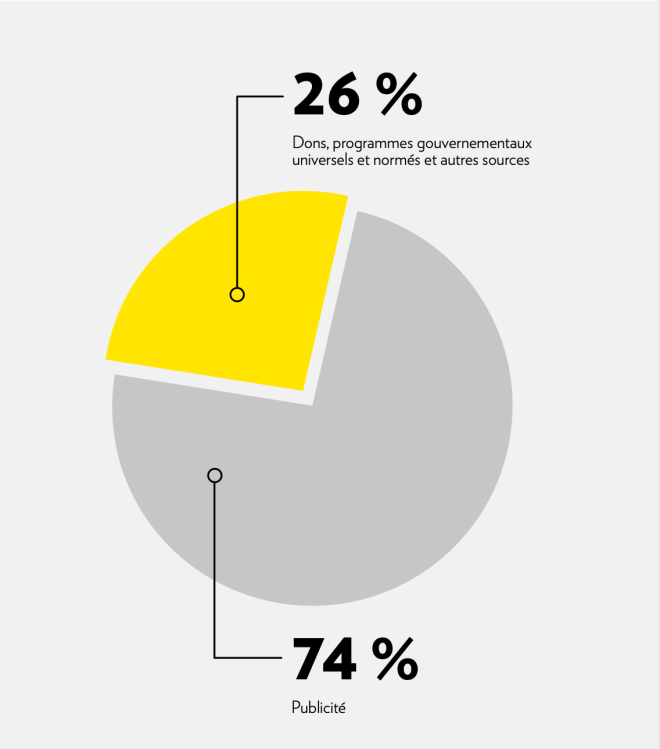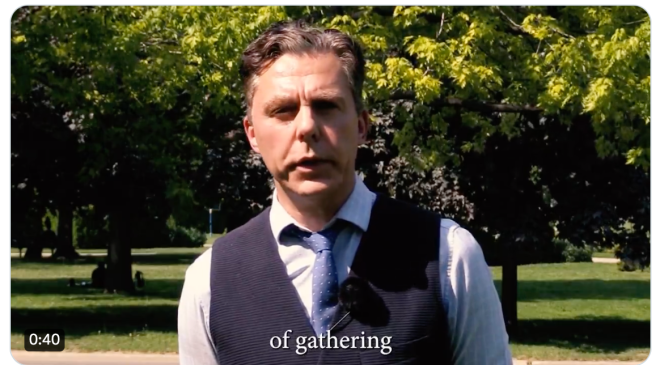
February 3, 2024
This week Québec’s CAQ government received the report of its blue ribbon committee on promoting French language media, a momentous event that flew under the radar of the English language press. [Update: now reported on by Canadian Press]
The Report makes a resounding statement of cultural sovereignty, wrapped in robust claims of Québec’s constitutional jurisdiction over digital media. That’s the same jurisdiction over streaming media that is the focus of the federal Online Streaming Act.
There’s more than one important political and policy angle to the Report’s recommendations to CAQ Culture Minister Mathieu Lacombe.
The immediate goal put forward by the Report, written by a panel chaired by former Parti Québécois cabinet minister Louise Beaudoin, is to do something about the failed discoverability of French language music on the major streaming platforms. This is a pressing policy issue in Québec that MediaPolicy pointed out on a couple of occasions.
The Coles Notes version is that the consumption of French language music in Québec has plummeted from the lofty heights of 65% must-play of French language songs on francophone radio to 8% of streams on foreign owned platforms. During the Parliamentary debate on the Online Streaming Act, Bloc MP Martin Champoux won multi-party support to insert an amendment requiring streaming platforms to “recommend” French language content using “any means of control” (i.e. including algorithms).
In the days following the Parliamentary conclusion of Bill C-11, CRTC Chair Vicky Eatrides effectively announced she had no intention of enforcing Champoux’s amendment, at least not in the short term. The Liberals could have countermanded the Chair in their Policy Direction to the Commission but elected to say nothing.
As I said in previous posts, this policy issue isn’t going away. Now it’s politics.
The Beaudoin Report is of much broader significance than the discoverability of French language music. Perhaps it is posturing, but the Report’s authors claim it’s still up for constitutional debate whether the extension of the federal broadcasting power from existing platforms to the Internet is a valid exercise of federal jurisdiction.
While one or two English Canadian provinces might welcome provincial authority over streaming —making it easier to deregulate broadcasting— Québec politicians of all stripes would love to use provincial powers to regulate streaming platforms more aggressively in the promotion of French language culture and media.
The Beaudoin Report regards a claim of provincial jurisdiction over streaming as leverage to encourage Ottawa to negotiate a bilateral agreement which gives the Québec government a hands on role in implementing and enforcing the Online Streaming Act. As observed in Le Devoir, this would be similar to the delegation of power and policy from Ottawa to Québec City in some immigration matters.
The Report contemplates the CAQ pushing the Trudeau government hard on the culture file. With the nationalist Parti Québécois opposition breathing down the CAQ’s neck in the polls, Lacombe is in a win-win situation. Either the Liberals deliver, or the CAQ and the Bloc have an appealing plank in their respective election platforms.
***
In December I shared with you my discovery of big picture guy Doug Shapiro, media commentator extraordinaire on Substack (not to be confused with another big picture media commentator, Eric Shapiro). Based in the US, Shapiro is a mellifluous explainer of emerging media trends. I hadn’t seen anything from him recently and now I know why. He has begun a four part series on, what else, the big picture.
Shapiro goes out on a limb and says the attention pie is not growing and is unlikely to do so. He sees media viewing at a saturation point based on daily consumption data. The weak point in his argument is his assumption that household spending on media won’t expand. With the pie fixed, according to Shapiro, the future is about whether the size of pie slices enjoyed by creators, curators and distributors in the value chain will change.
In the first instalment of his new series, “fragmentation,” Shapiro describes the supply and demand sides of the media industry. On supply, he sketches out the well known portrait of the Internet’s “infinite” content, thanks to the explosion of low-cost creator content on social media, especially YouTube and TikTok. The potential for AI to goose supply by further lowering production costs seems likely too.
On the demand side of the coin, he points to a changing definition of “quality.” He’s not saying that the creator economy has cheapened taste, only that it has broadened appetites for the kaleidoscope of content at which social media excels. Podcasting and gaming are also making outsized gains, while premium video is treading water (he says it’s cinema and book publishing giving ground).
All of this proliferation of content supplied and demanded —the “fragmentation” of media —might threaten Hollywood’s production of premium video. Over the decades, Hollywood built the world’s dominant production cluster and succeeded in hedging for the unpredictability of hit content. But the more fragmented the media universe, the more difficult the task.
Don’t take this summary as an adequate description, Shapiro’s post is an excellent 12-minute read (fifteen minutes if you dwell on his wonderful charts and personally I’m a fool for charts).
***
The Globe’s Gary Mason had a dead-accurate column this week in which he asked, somewhat rhetorically, if news media is doomed. The gist of the article is, ‘yes of course.’
The recent events that give rise to such deep pessimism include the Canadian bankruptcies of the Black Press and Metroland chains of community newspapers and, in the US, mass newsroom layoffs at the LA Times, a billionaire-backed major metropolitan daily.
Mason offered this look-the-worst-in-the-eye comment:
More and more, there seems to be a class divide when it comes to the news media. There are those (the monied and educated) who can afford subscriptions that give them access to top-quality reporting and those who can’t, driving many in this group to seek their information elsewhere, often in cesspools of misinformation and propaganda. Consequently, there is a growing chasm between those who are informed and those vulnerable to con artists and shysters operating in the vast digital wasteland that is the internet.
On the other hand.
This week Montréal’s non-profit La Presse released its 2023 annual report. The headline is 13,000 new donors —as a non profit Registered Journalism Organization the news outlet can raise money through tax deductible donations. This brings La Presse to 56,000 donors, mostly under $5000. Sixty per cent of those donors are on automatic renewal, essentially pay-what-you-can subscribers.
The bottom line: La Presse was in the black for the fourth year in a row. It’s $13 million surplus will be reinvested, says CEO Pierre-Elliot Levasseur, in expanded editorial coverage and a deposit to its rainy-day reserve fund.
Of course, LaPresse is not paywalled. In fact 74% of its revenue is from advertising, the remainder from government subsidies, donors and syndication revenue.

Is La Presse a template for success for other unpaywalled metropolitan dailies?
The most distinguishing features of its success are, foremost, being a big fish in a small francophone market and, according to my sources, the smartest and most savvy leadership team going.
***
The winner of the good and valuable deeds award goes to the University of Toronto’s Investigative Journalism Bureau (IJB) for its recently unveiled Sunlight Project. You can hear more about it from Toronto Star reporter Rob Cribb in this video.

The Project is a collaboration between the IJB and the U of T Library that creates a searchable database of freedom of information requests made and answered since 2014 with respect to Ontario’s provincial government. A reporter’s dream, but also a great opportunity for bloggers and activists.
Now for Canada’s other 13 jurisdictions…
***
If you would like regular notifications of future posts from MediaPolicy.ca you can follow this site by signing up under the Follow button in the bottom right corner of the home page;
or e-mail howard.law@bell.net to be added to the weekly update;
or follow @howardalaw on Twitter.
12 thoughts on “Catching Up on MediaPolicy – Québec claims regulatory powers- Is La Presse a template for success? – Doug Shapiro’s big media picture”